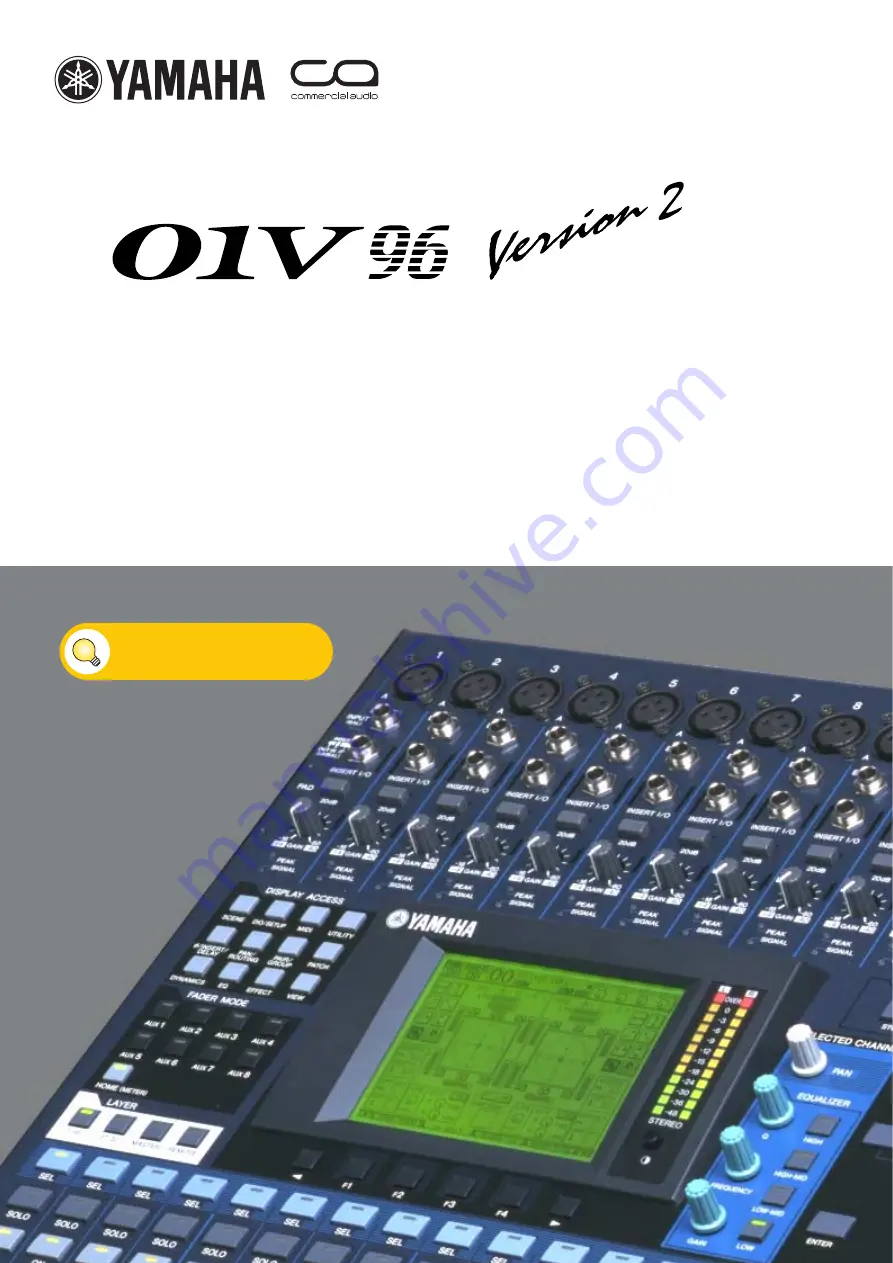
Quick Start Guide
This is a “quick start guide” designed for people about to use Yamaha 01V96 for the first time. It is not
a guide to audio mixing and it assumes the reader has experience of analog mixers. It does not replace
the manual; we recommend referring to the manual if further information is required.
328 pages of manual and then the
editor and driver guides. Mmmmm.....
there has got to be a quicker way...
















